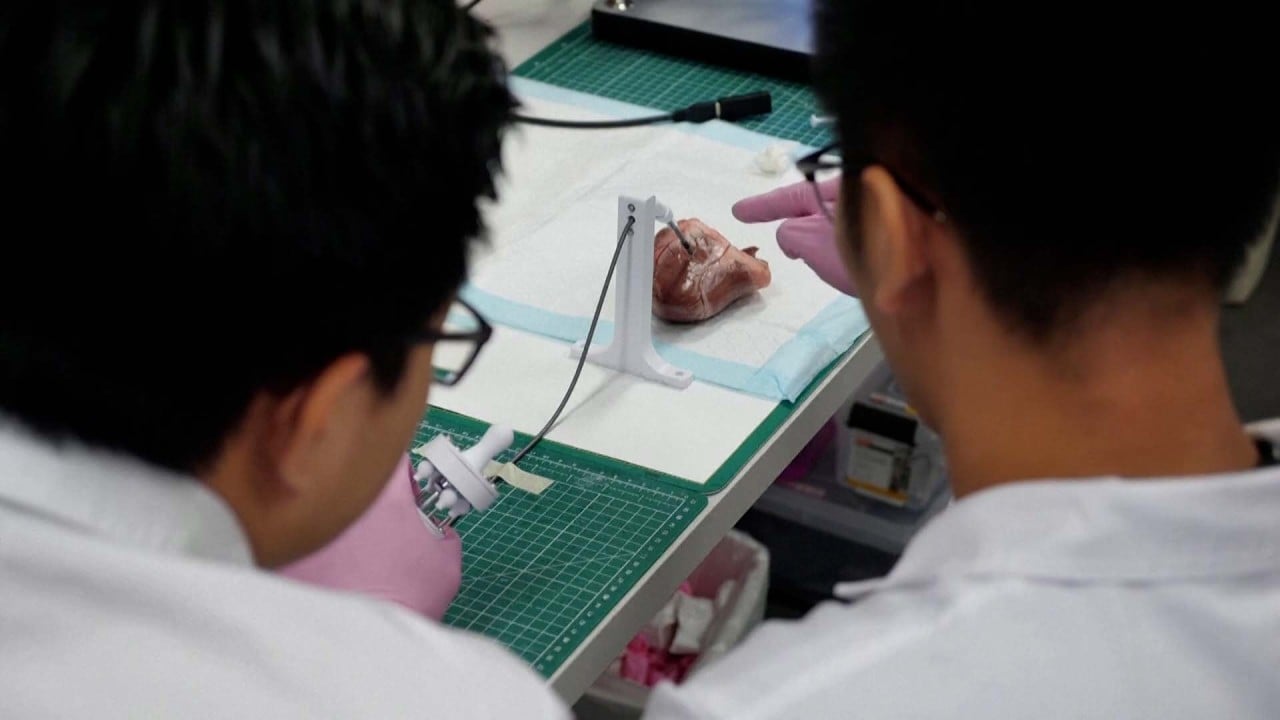The 5.3-gram (0.18-ounce) robot detected and quantified ammonium, chloride, and Sars-CoV-2 virus particles in a simulated pipe during testing, according to a paper published in the journal Science Advances.
The researchers say that monitoring of confined spaces such as pipes has the potential to improve public health, but is often limited to manual sampling at the exit point and is used to “trace specific sources of contamination. “It is difficult,” he said.
Lead author of the paper, Lee Dengfeng of the City University of Hong Kong, said the robot could be adapted to monitor a variety of molecules such as heavy metals, biological particles and nuclear pollutants.
Small mobile robots are already able to perform tasks in confined spaces that are impossible for humans, but most of them “have a severe lack of detection capabilities,” Lee said.
Lee said the researchers set out to design a robot that would swim “like a dolphin,” with the aim of developing a robot with both locomotion and detection capabilities that could operate underwater.
The resulting device “enhances the effectiveness and flexibility of mobile electronic surveillance systems without compromising performance in tight confined spaces,” the paper says.
Propulsion for the robot’s “tail” is provided by an electromagnetic drive system that controls a magnet that causes the robot to vibrate and “swim” in the water.
Electrode sensors on the device can be designed to detect a variety of molecules based on public health needs, and “may help prevent diet-related illnesses and viral infections.”
To keep the robot as lightweight as possible, the researchers chose not to use batteries as a power source, instead using radio frequencies and harvesting energy from electromagnetic fields emitted by external coils.
All you need is an antenna and a power receiving module to charge your device while it continues to monitor the environment. All components are designed to operate wirelessly, allowing the robot to operate in closed-loop environments such as circular pipes without tangled cables.
The paper says that although the researchers have integrated sensing and locomotion capabilities, there are still limitations to the robot’s design.
The use of radio frequency energy limits the robot’s working distance, and data transmission to the smartphone relies on near field communication. Bluetooth increases transmission range, but requires more power than the system can provide.
According to Li, the recommended maximum distance for using the robot while ensuring high swimming speeds is 4cm (2 inches). Data transfer from the robot to the smartphone can be performed up to 10cm away.
“Such distances are sufficient for applications in pipelines, living waters, and even within the human body, but not for applications in deep or remote waters,” he said.
But he said the team has demonstrated a “general technology” and that elements of the system, such as pathogen and ion-sensing modules, can be integrated into existing underwater robots to “easily” create underwater devices for deep-sea detection. He added that it is possible.
“Expanding sensing capabilities will be key to enabling this monitoring platform to operate in more application scenarios,” the researchers wrote.
The device could also have applications in humans, such as monitoring acid in the stomach and performing electrical stimulation therapy, the paper said.



